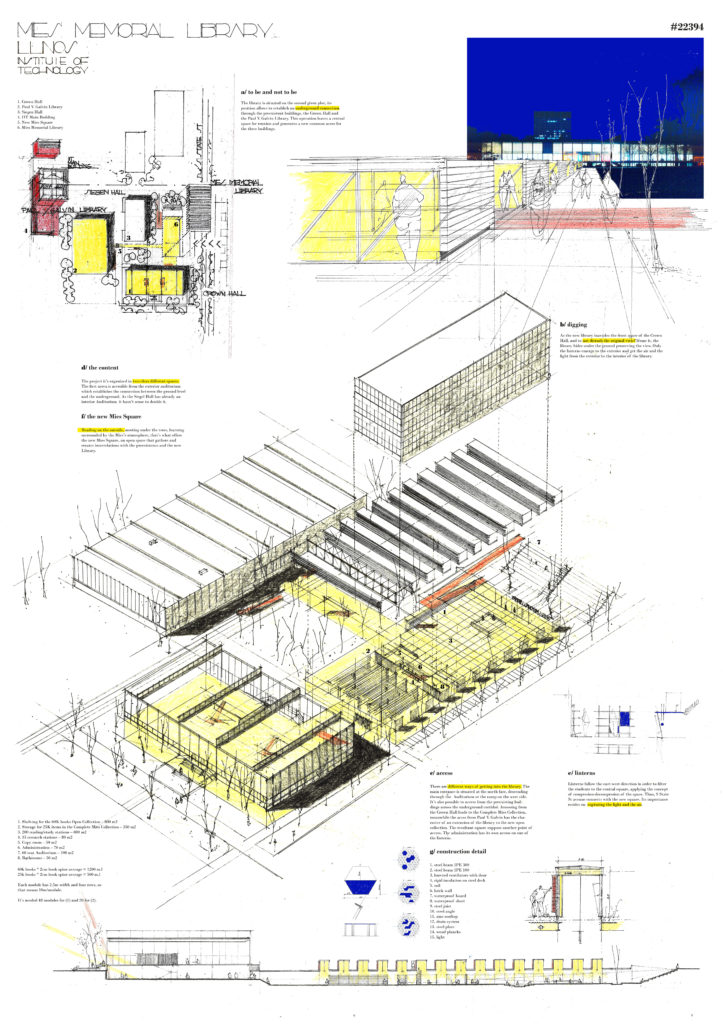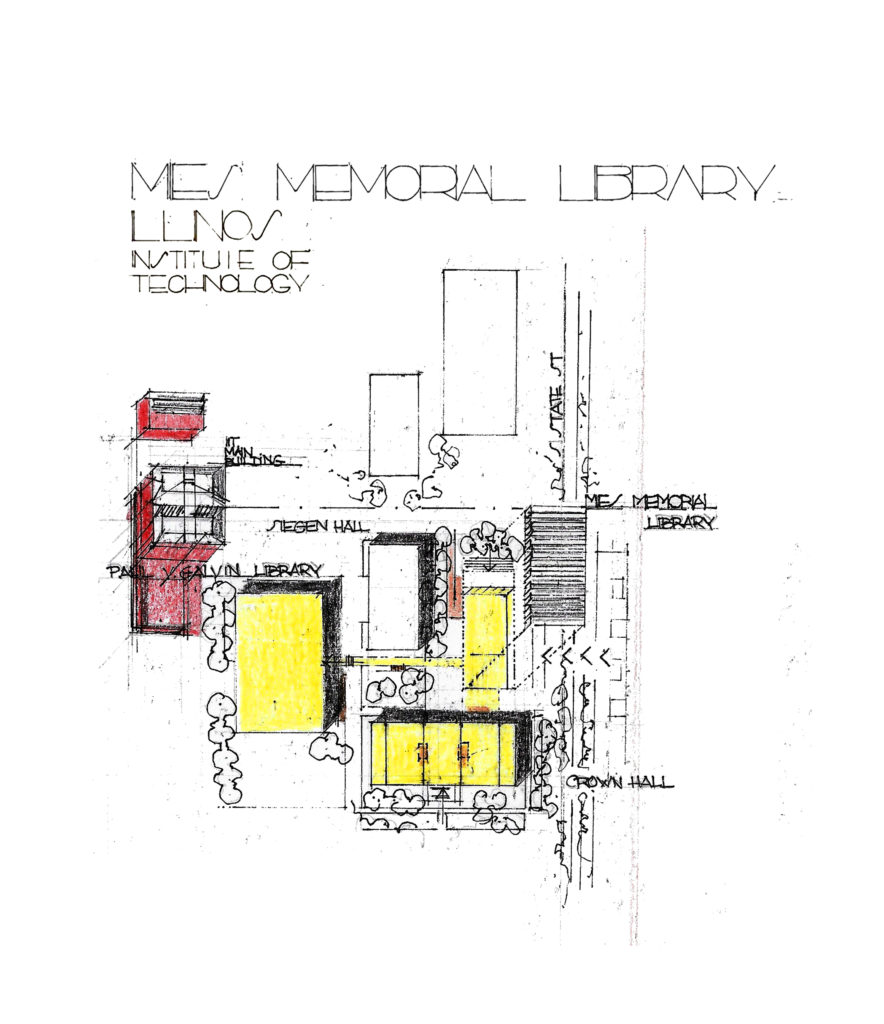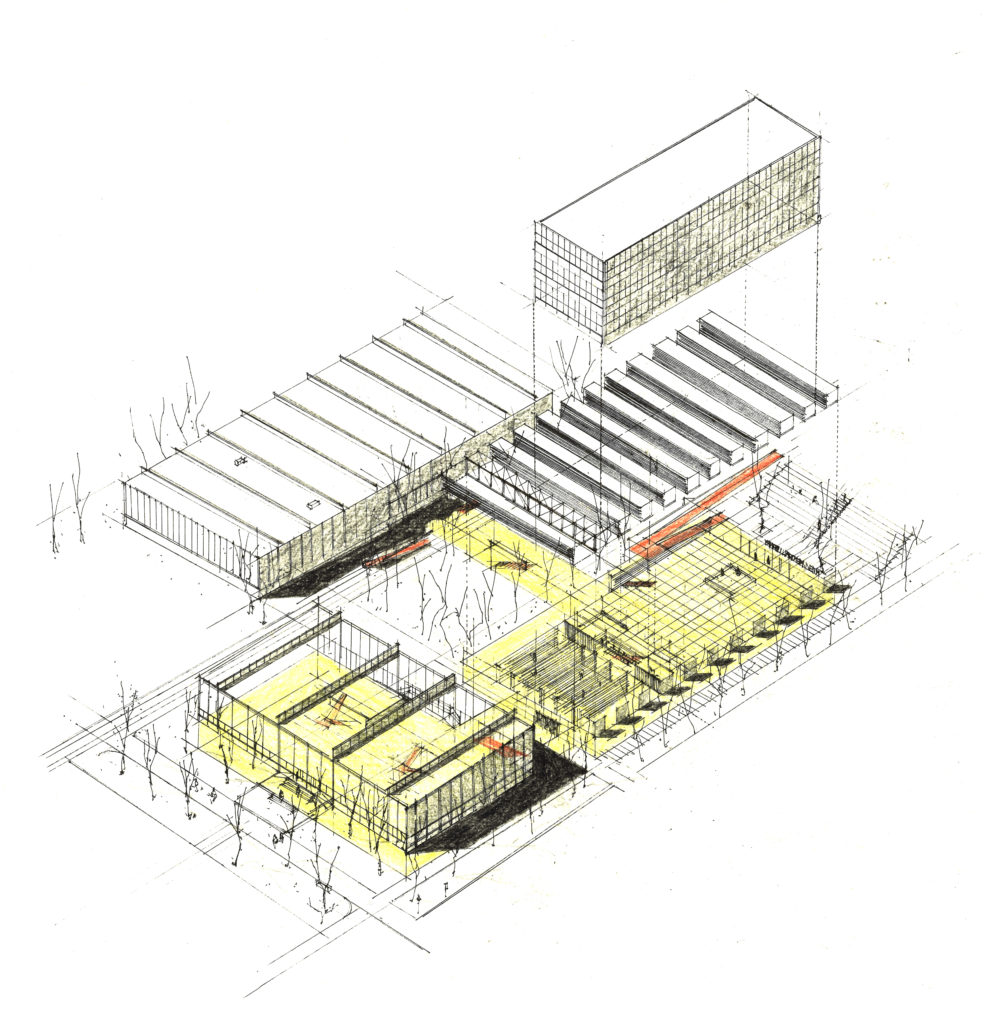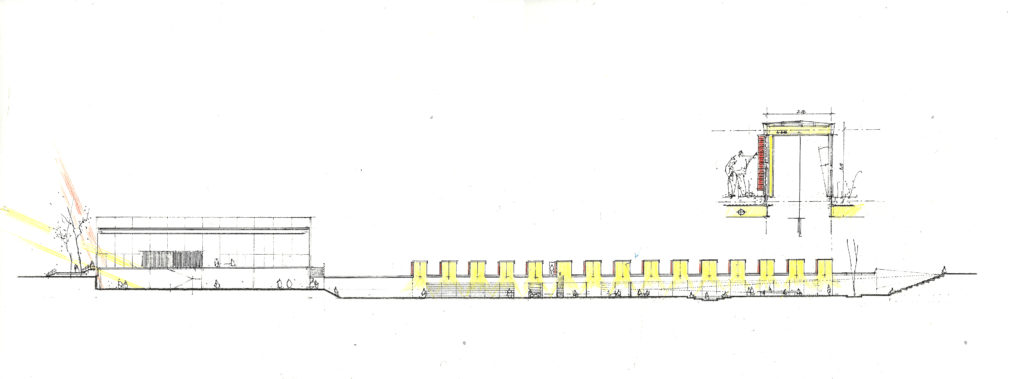1. Crown Hall
2. Paul V. Galvin Library
3. Siegen Hall
4. IIT Main Building
5. New Mies Square
6. Mies Memorial Library
a/ to be and not to be
The library is situated on the second given plot, its position allows to establish an underground connection through the preexistent buildings, the Crown Hall and the Paul V. Galvin Library. This operation leaves a central space for reunion and generates a new common acces for the three buildings.
b/ digging
As the new library inavades the front space of the Crown Hall, and to not disturb the original views frome it, the library hides under the ground preserving the view. Only the linterns emerge to the exterior and get the air and the light from the exterior to the interior of the library.
c/ access
There are different ways of getting into the library. The main entrance is situated at the north face, descending through the Auditorium or the ramp on the west side. It’s also possible to access from the preexisting buildings across the underground corridor. Accessing from the Crown Hall leads to the Complete Mies Collection, meanwhile the acces from Paul V. Galvin has the character of an extension of the library to the new open collection. The resultant square suppose another point of access. The administration has its own access on one of the linterns.
d/ the content
The project it’s organized in two clear different spaces. The first aerea is accesible from the exterior auditorium which establishes the connection between the ground level and the underground. As the Siegel Hall has already an interior Auditorium it hasn’t sense to double it.
e/ linterns
Linterns follow the east-west direction in order to filter the students to the central square, applying the concept of compresion-decompresion of the space. Thus, S State St avenue connects with the new square. Its importance resides on capturing the light and the air.
f/ the new Mies Square
Reading on the outside, meeting under the trees, learning surrounded by the Mies’s atmosphere, that’s what offers the new Mies Square, an open space that gathers and creates interrelations with the preexistence and the new Library.
g/ construction detail
1. steel beam IPE
2. louvred ventilators with door
3. rigid insulation on steel deck
4. soil
5. brick wall
6. waterproof board
7. waterproof sheet
8. steel joist
9. steel angle
10. zinc rooftop
1. Shelving for the 60K books Open Collection – 800 m2
2. Storage for 25K items in the Complete Mies Collection – 350 m2
3. 200 reading/study stations – 800 m2
4. 15 research stations – 80 m2
5. Copy room – 50 m2
6. Administration – 70 m2
7. 60 seat Auditorium – 100 m2
8. Bathrooms – 50 m2
60k books * 2cm book spine average = 1200 m.l
25k books * 2cm book spine average = 500 m.l
Each module has 2.5m width and four rows, so that means 10m/module. It’s needed 48 modules for (1) and 20 for (2).





